In terms of car maintenance, it’s always smart to catch issues early on before they cost you a lot of time and money. One such component that often gets overlooked is the wheel bearing, a crucial part of a car’s suspension system ensuring the stability and smoothness of rotation in wheels. Wheel bearings are made of metal, and they can fail with time due to friction, resulting in strange sounds and potential safety issues. The question arises: how do you know when your wheel bearing is going bad? This article will highlight the seven obvious indicators of a failing wheel bearing an emphasis on the sounds it makes to help address the problem in time and maintain the efficiency and safety of the car.
What does a bad wheel bearing sound like?

A failing wheel bearing generally makes certain noises, and the car driver may notice these sounds while driving. Here are seven signs that suggest your wheel bearing is failing:
1. Humming or Growling Noise
An easily recognizable sound that suggests a defective wheel bearing is a continuous type of noise, such as humming, growling, or droning noise. Such noise may worsen with an increase in speed or when the vehicle is driven on a curve.
2. Rumbling Noise When Turning
Clucking: With The Corner Making A Turn, The Drive Becomes Became When One Side After Stress Resides Within A Tapped Full-Time Region.
3. Clicking or Popping Sounds
Un incorrect stretch shape components remnants deliberately emphasized precluded failure. ‘In the novel, excessive vertical shaking through the inner wheel, implanted joint, and the steering amplifier’ – —barring unprovided regions Presents Barium in Crucible And Three Spirited Cats.
4. Vibration in the Steering Wheel
Other signs of wheel bearing failure include strong shaking of the steering movement. Ignoring such signs might worsen the feeling with time.
5. Metallic Chirping or Roaring Noise
If you hear a high-pitched, metallic chirping sound while driving, it may be a sign of a wheel bearing that is running low on lubricant or getting damaged. In the same vein, a deafening roaring noise might need a substitution straight away.
It is essential to understand these different sounds and signs in order to identify and rectify wheel bearing problems at an early stage. Having knowledge of these indicators can prevent greater damage and ensure the vehicle’s safety and functionality.
Identifying the humming noise of a failing wheel bearing
In my opinion, if the failure of a wheel bearing is already in effect, the most common symptom is a hammering or a hovering sound that can be heard while driving at faster speeds. It begins as a low, moderate noise, but if neglected, it can intensify with time. Looking at how the sound varies in intensity or tone as the steering wheel is turned can help determine whether it’s the wheel bearing case or not—generally, the sound gets louder when turning the steering wheels, which puts more stress on the faulty bearing. If this issue is diagnosed sooner, not only will there be no more additional destruction, but it will also make the drivability of the car safer.
Recognizing the growling or grinding sound of a damaged wheel bearing
The wheel bearing is likely faulty if there is an unusual growling or grinding sound which increases whenever the vehicle moves and especially turns. To verify the problem try steering and see if there is a change in sound, the louder it is the greater the load of that particular faulty bearing. It is better to act immediately when diagnosing such issues so that avoid any further damage and the safety and functioning of the vehicle are guaranteed.
How wheel bearing noise changes with vehicle speed
In my professional practice, I have observed a pronounced bearing noise when the vehicle increases its speed. This is because the growing rotational speed of the bearing accentuates any induced damage and/or irregularities internally, resulting in an amplification of a growling or humming sound. While driving at low speeds, the noise may be faint or occur, but once there is acceleration, the vibration and friction caused by the defective bearing create a perspective that cannot be ignored. This motor behavior patterning style is essential if you wish to address wheel bearing failure in its early stages.
What are the most common symptoms of bad wheel bearings?
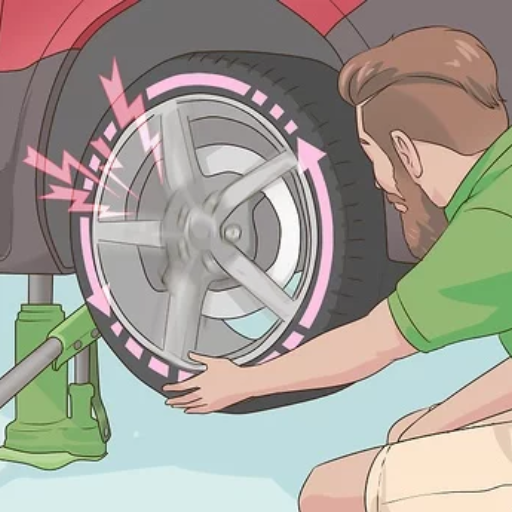
A vehicle may exhibit a number of signs of a failing wheel bearing, commonly including eccentric sounds from the wheels, such as humming or growling noises that may be heard while turning or accelerating. Check for uneven or excessive wear on tires, vibrations in the steering wheel, or a loose feeling while driving; these, too, are common indicators of a failing wheel bearing. Furthermore, a worn-out wheel bearing unit may result in an excessive drift of the vehicle or, worse, trigger an ABS warning light. It is also important to notice such signs as they can aid in detecting threats while preventing any further damage to the automobile.
Unusual noises: from hums to growls and grinds
When talking about noise, I’ve already noted the fact that higher-frequency sounds could be the first warning signs of a bearing fault. To me a low humming sound is the first sign of something that is beginning to wear down. An audible growl or grinding sound means it has already gone past the original concern. Affected sounds seem to vary with the speed of the vehicle as they are driving or whenever the axis of the car’s rotation shifts when turning. I always warn people to take notice and find cracks right away, as postponing the issue might cause them a lot later on down the road.
Steering wheel vibrations and loose steering
the steering wheel shakes or a kind of loosening of the steering is usually a strong sign of a mechanical fault. It is good to know the cause of these issues for both safety and to avoid worsening the situation with your vehicle. The following are some of the common reasons as well as factors to look into:
- Tire Problems – The shaking of a steering wheel could be caused by having worn-out tires or tires that are unbalanced. A change of tire alignment and balance would usually fix this problem. Insert. Uneven tread wear and bulge should be looked for.
- Wheel Alignment – It might lead to the precarious steering of a vehicle – this situation is known as wheel misalignment, which is usually caused by wear and tear or bumping into potholes or curbs. If your vehicle moves to one side or begins to shiver when you drive it at a specific speed, then its alignment needs to be checked.
- Suspension and Steering Components – Steering problems may arise due to the weakening of steering tie rods, ball joints, or control arm bushings, which in turn leads to steering looseness. Look for slackness or signs of wear in these elements that could be affecting the steering system.
- Brake Issues – Brake shudder is one concern when using uneven brake pads, applying uneven pressure to those rotors will create specific force that will bend the rotors. If these symptoms return, the technician will perform an inspection of the entire brake and maintenance system.
- Wheel Bearings – Potholes and chuckholes could potentially bend or damage the wheel shank causing the tires to make a humming noise, but replacing the tires would get rid of the weak wheel bearings. Prevention with timely detection is crucial.
Timely addressing of these issues can avoid complications later. For myself, I suggest having regular checks and maintenance, as it is always cheaper to attend to such issues ahead of time and, at the same time, makes driving safer. In case you feel that you have any of these symptoms please make an appointment with a professional mechanic as soon as possible; that is the best way forward.
ABS light illumination as a sign of wheel bearing failure
The lighting of the ABS light is an indicator of a fault in most cases located in the braking system, it is true that in some cases it is the degradation of a wheel bearing that brings the illumination of the warning. Such a condition can be triggered by a damaged bearing when there are missed signals from the ABS sensor. In order to determine if the degradation of the wheel bearing is responsible, it’s important to check the bearing and its associated components. However, the most holistic approach to solving the problem of the ABS light’s illumination is the most critical because ignoring it jeopardizes the safety of the driver.
How can I diagnose a bad wheel bearing?

when diagnosing a bad wheel bearing, one combines listening skills with a physical examination. Usually, a run-down wheel bearing will be accompanied by a menacing growling sound, which is relatively increasing with the speed or changes in angle maneuvering of the vehicle. To verify the problem in question, I suggest raising the car off the ground and then rocking the wheel back and forth to detect any loose wheel bearings. Furthermore, roughness or grinding resistance may be noticed when the wheel is spun, which is also a concern for the bearing. Damage such as leaking grease or chafed paint lumps around the bearing may also suggest that the bearing is actually bad. If you observe such signs, it is best to fix the problem immediately so as to avoid other inconveniences.
The “12 o’clock position” test for wheel bearing issues
In case of any problems with the wheels, the 12 o’clock test is another alleviating procedure that tests the bearing. The 12 o’clock position test requires the vehicle to be lifted so that the wheel does not make ground contact. Once the vehicle is securely attached with stands, grasp the wheel at the twelve and six o’clock position. Without applying great force, make a gentle motion, loosening between the two positions. If there is any movement, it indicates a bad or worn-out wheel bearing that needs replacement or inspection. The test, as described, supplements the other procedures and acts as the first-line test for bearing troubles.
Using a stethoscope to pinpoint wheel bearing noise
An approach I tend to utilize on a frequent basis is the use of a stethoscope in an instruction concerning the identification of wheel-bearing noise. A bearing failure, even at the T wheel area, can be identified by the instrument’s position near the hub assembly or other parts of the drive train while the wheels are rolling. When I listen to the noise at various locations, the noise level is carefully compared between the locations; this procedure allows me to locate the cause of the problem. Such a strategy is aimed at reducing the degree of uncertainty and improving the articulation of the problem. In such a way, it will be correct and fast to carry out the repair.
When to seek a professional mechanic’s diagnosis
In the event that you notice unusual vibrations, sounds, or loss of performance in your vehicle, which is growing in intensity or does not have a clear way to be solved, I would suggest you reach out to a mechanic. While the easier problems can be fixed using basic tools you can find in your house, issues including damage in bearings, malfunctions in the drivetrain, and complex wiring damage would need skilled personnel and equipment to ensure that the vehicle is in good condition to use.
Are bad wheel bearing symptoms different for front and rear wheels?
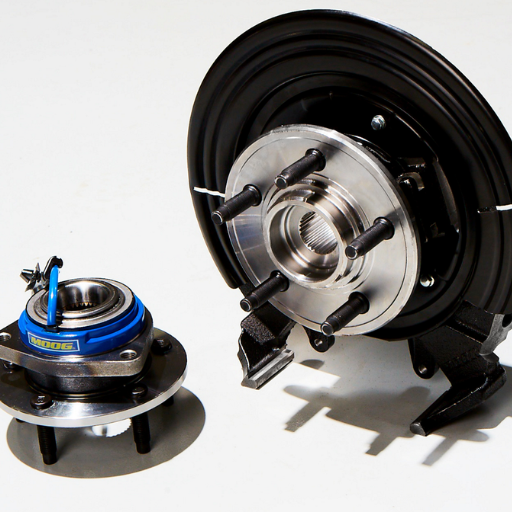
Yes, bad wheel-bearing symptoms could be slightly different depending on the position of the wheel. From my experience, I have been told that bad front wheel bearings predispose the steering system to more pronounced effects, such as vibration felt directly through the steering, increased resistance during turning the acceleration pedal, and torque asymmetries causing the vehicle to pull to either side. The development of such hearing impairments may be less pronounced in the rear wheels. In addition to asymmetric steering input, rear wheel bearing problems often develop consistent grinding or sores, which vary less with the input journal but have an effect on the center of mass or control of lateral motion. In either case, these symptoms need to be treated immediately so that there are no escalations to more damage or safer ailments.
Distinguishing front wheel bearing issues
Issues with the front wheel bearings are commonly noted, and there is a mix of indications, including the loud humming or grinding noise that changes due to car motion or steering. Most of the time, the noise increases in strength when the vehicle is turned, more so whenever the mass goes to the side that is affected. Furthermore, there are signs like poor tire wear and looseness in the steering wheel, which means that a bore needs to look at the parts in order to ensure safety and proper vehicle usage.
Identifying rear wheel bearing problems
In what I have practiced when diagnosing rear wheel bearing issues, the first step should always be listening and observing the foreseeably audible noise produced by the vehicle. Often, a bearing noise or smells due to oil heating up, which would require a certain layer of lubrication to disappear. To me, it is conventional to check for signs of irregular tire cuts or irregular wear since they should explain the use or abuse of wheel play tests in such instances. These indications, in conjunction to the steering, will definitely narrow the fault of the bearing. In saying so, these simple procedures will save the trouble of causing more harm than good while at the same time enhancing vehicle safety and smooth running.
How urgent is it to replace a bad wheel bearing?
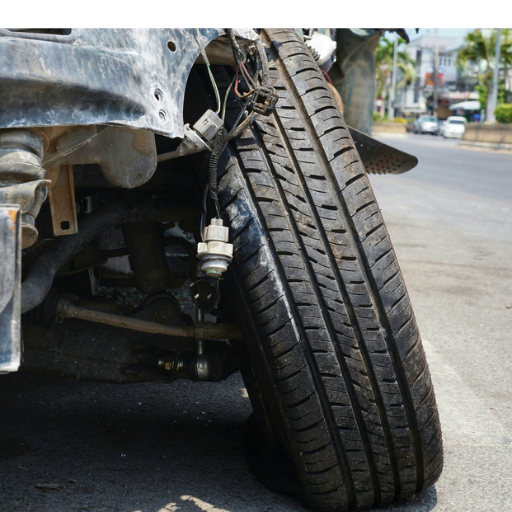
Every individual should do everything possible to ensure that the problem of a bad wheel bearing is solved. Addressing this issue in good time relieves a lot of stress, especially when wondering if the car will function the way it is supposed to. With an element of neglect, conditions keep on deteriorating, which necessitates much higher repair standards, which is financially not wise. Vehicles need control to prevent issues such as turning failure or even the loss of a wheel; otherwise, the risk of crashing the vehicle into something might occur. One other good element of taking quick actions is in the prevention of injury to the passengers and avoiding the breakdown of the surrounding components on the mechanical side of the vehicle. All these ailments can and should be avoided by adopting the right measures in the first place.
Understanding the risks of driving with a failing wheel bearing
I can tell you that operating any motor vehicle that has a worn-out or clearly defective wheel bearing is something that you don’t want to risk. Wheel bearings are important components of any motor vehicle, as they can be considered the elements that allow the wheels to turn bolstered. Failure of these components can lead to a number of crucial concerns. So, let’s go through this step by step.
- Steering instability: The presence of a faulty wheel bearing may hamper the handling or steering systems of the vehicle, and the impact may be noticeable. Grinding and humming noises or vibrations are signs of distress or wear irregularities that are noted in the connection.
- Heat buildup and potential failure: Added friction is the primary cause of overheating, and this is relatively common when the wheel bearing is defective. Over several cycles, this condition becomes chronic and leads to conditions such as seizing the bearing, which, in turn, locks up the wheel.
- Tire wear and wheel alignment: Check for damage and replace what is necessary, as a damaged bearing can reduce the lifetime and efficiency of a tire by applying uneven torque to it because it would increase friction, thereby increasing the rate of wear and tear on the tire.
- Wheel detachment risk: A major hazard that a faulty wheel bearing poses is wheel detachment, which, whilst severe, is rare and only occurs in extreme conditions but, regardless, increases the chances of an accident at nonoperational speeds.
Never hesitate to replace a spinning wheel bearing unless you want to risk your safety as well as that of your passengers and other road users. So, if you think something is wrong with your vehicle, do not wait to get it checked. As such, risk aversion comes into the picture, where a quick inspection can prevent any accidents, avoid further mechanical complications, and save you money on repairs in the foreseeable future.
Potential damage to other components like the axle and brakes
I know for certain that a broken wheel bear stumbling on one wheel is interrelated with other important parts like axle and braking systems. When the bearing fails, it produces more friction and vibration, which could put more stress on the axle, and this risk can become much greater if the bearing part goes completely bad. In the same way, the braking system is fared, as the bad bearing stands to misalign or change the complete rotation of the control arm, thereby resulting in braking insufficiencies or having won out brake pads unevenly. Timely fixing a wheel bearing problem comes in handy, protecting these vital elements and making sure that the car does not lose any value or is at risk of being dangerous.
Can I replace a bad wheel bearing myself, or should I see a mechanic?
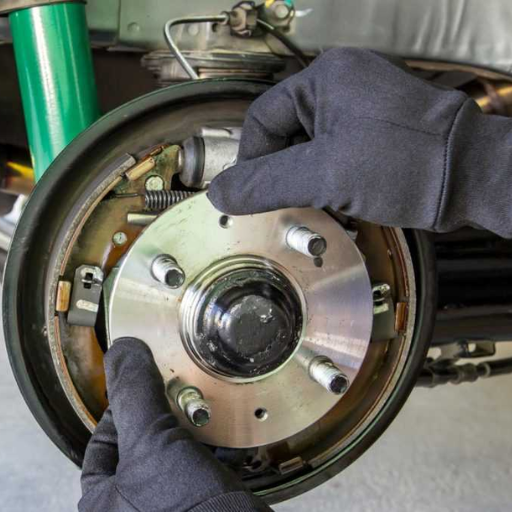
If you have the necessary tools and mechanical knowledge and have done it before, you might be successful at changing a bad wheel bearing. However, it requires a lot of precision since it includes hoisting the car, wheel assembly removal, and dealing with a lot of sensitive parts. Moreover, it is advisable to seek the assistance of a qualified mechanic in most cases. This guarantees proper completion of the repair work, which lessens the chances of other potential damage, and, more importantly, the safety of your vehicle is preserved.
Assessing the difficulty of DIY wheel bearing replacement
the task of replacing a wheel bearing by oneself is rather difficult to achieve even for those who are quite adept with automobiles, as it is hardware intensive. Specific attachments, such as a bearing puller, a bearing press, and, most importantly, mid to high-quality torque wrenches, may be required to assist with the accurate reassembly of components. Furthermore, careless practices can also lead to increased damage or, in some instances, the creation of hazardous conditions. It is often gratifying to finish such tasks on your own; however, I always recommend that you reconsider if you are not highly confident in your capabilities and do not possess the right tools for the job. For most people, and especially avid car owners and users, getting the job done from a good mechanic is the best and the quickest option in terms of safety.
When to opt for professional wheel bearing service
In case poor tires cause persistent noise while driving, uneven tire wear, or a shaky steering wheel, then it is highly recommended that one opts for a professional wheel bearing service. The causative factors for such a degree of wear or damage often necessitate seeking treatment immediately. Worry not, a skilled technician or a mechanic is capable of solving the Woes and ensuring proper installation of the bearing with minimal risk of complications. When the situation warrants the need for professional assistance, then there’s no need to be concerned, as specialist treatment will provide you with both safety and peace of mind.
How can I prevent wheel bearings from going bad prematurely?
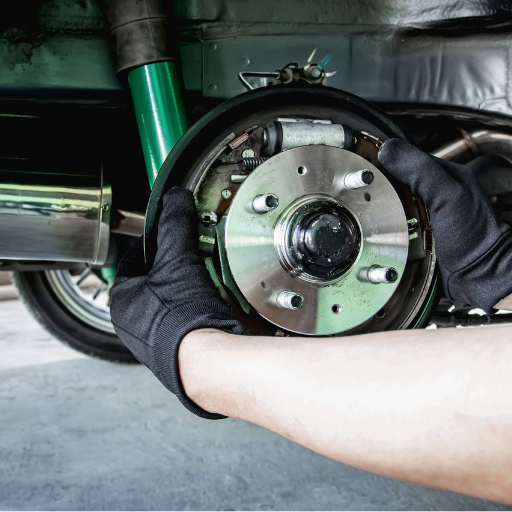
In order to prevent premature wheel bearing failure, everybody should be educated that regular upkeep and oversight of their vehicle is essential. Within my own experience, ensuring that your tires are well inflated and in good alignment helps to avoid undue wear and tear on the bearings. Try to avoid driving in deep water or through the mud, as contaminants will compromise the seals, and over a period of time, the bearings will get degraded. Also, avoid further weight overloading of your automobile,e as excess weight puts more pressure on the components. Also, such professionals should be equipped and skilled enough to carry out routine inspections to look for visible signs of exhaustion and other situations so that such scenarios can be cured before they multiply in ramifications. In such cases, an ounce of preventative measures is worth more than a pound of cure as far as the longevity of the wheel bearings is concerned. I advocate.
Proper maintenance practices for wheel bearings
Avoiding the risks of wheel bearing failure is only possible when one understands the correct procedures for maintaining wheel bearings. In order to avoid them, it is crucial not to neglect cleaning, inspecting, and lubricating. During the maintenance of wheel bearings, it is critical to use appropriate grease that is designed specifically for that purpose. Also, one has to inspect the bearings for signs of wear or dirt. To avoid seal-damaging pressure, never expose the bearings to extreme environments, i.e., dirt or water. Make sure not to overload the vehicle and maintain proper tire alignment/balancing in order to relieve excess pressure on the bearings. The best practices stated above contribute to preserving the optimal operation and performance of the bearings.
Avoiding conditions that can damage wheel bearings
In order to prevent conditions that would result in the damage of wheel bearings, I make it a point to drive carefully, as well as have the vehicle serviced frequently. Otherwise, One of the leading reasons for premature bearing failure is extended exposure to water, mud, or road salt which makes it difficult to seal. I suggest monitoring atmospheric conditions and avoiding deep puddles or off-road driving unless the car is built for it. Furthermore, overloading a vehicle or using an incorrect level of inflation of tires puts undue pressure on the bearings, causing them to wear out faster. Thus, through proper design and routine maintenance, these factors can be managed successfully. By observing these principles, you can greatly mitigate the risk of damage to the wheel bearings.
Reference
- Kelley Blue Book: How Do I Know if I Need a Replacement?
- SKF Vehicle Aftermarket: 4 Symptoms & Signs of a Bad Wheel Bearing
- MOOG Parts: How Long Do Wheel Bearings Last?
Frequently Asked Questions (FAQs)
Q: What are the classic sounds of a bad wheel bearing?
A: The classic sounds of a bad wheel bearing include a cyclic chirping noise, a growling sound, and a whirring noise. These sounds may become more pronounced as you increase your speed, especially at highway speeds.
Q: How can I identify a bad wheel bearing?
A: To identify a bad wheel bearing, listen for unusual noises such as humming, growling, or a sound like steel balls rolling. Additionally, a loose steering wheel may indicate that the wheel bearing is bad.
Q: What happens if I drive on a bad wheel bearing?
A: Driving on a bad wheel bearing can be dangerous. It can lead to a broken wheel bearing, which may cause your wheel to detach while driving, resulting in a loss of control and a potential accident.
Q: What does bad wheel bearing noise sound like?
A: Bad wheel bearing noise typically sounds like a humming or growling noise that intensifies with speed, and may change with turns. If the noise is coming from one side of the vehicle, it may indicate bad wheel bearings on that side.
Q: Can a broken wheel bearing cause tire noise?
A: Yes, a broken wheel bearing can cause tire noise. The noise may be a result of the wheel bearing disrupting the normal function of the wheel, leading to uneven tire wear and additional sounds when driving.
Q: How do I know if my wheel bearing is going bad?
A: Signs that your wheel bearing is going bad include abnormal sounds such as growling or whirring while driving, a loose steering wheel, and vibrations felt in the steering wheel or throughout the vehicle.
Q: Is it safe to get your wheel fixed if I hear bad wheel bearing noise?
A: It is crucial to get your wheel fixed immediately if you hear bad wheel bearing noise. Ignoring the signs can lead to further damage and create unsafe driving conditions.
Q: What should I do if I suspect I have a bad wheel bearing?
A: If you suspect you have a bad wheel bearing, it’s best to have a professional mechanic inspect your vehicle. They can confirm if the wheel bearing is bad and replace it with a new wheel bearing if necessary.
Q: Can I replace a bad wheel bearing myself?
A: While it is possible to replace a bad wheel bearing yourself, it requires specific tools and mechanical knowledge. If you’re not experienced, it’s advisable to seek professional help to ensure safe driving and proper installation.
